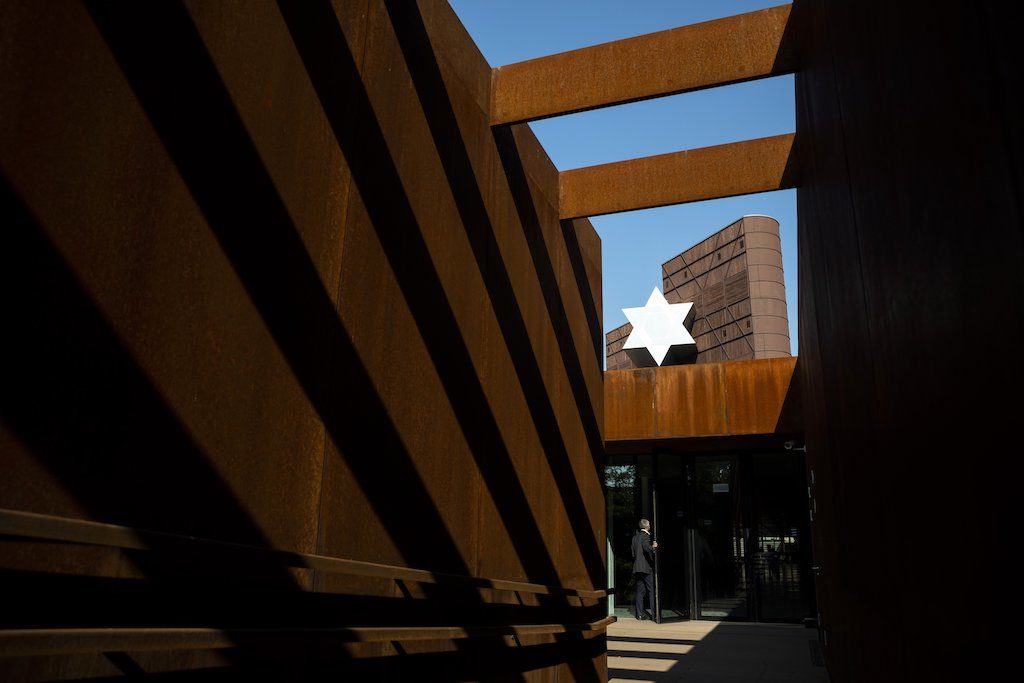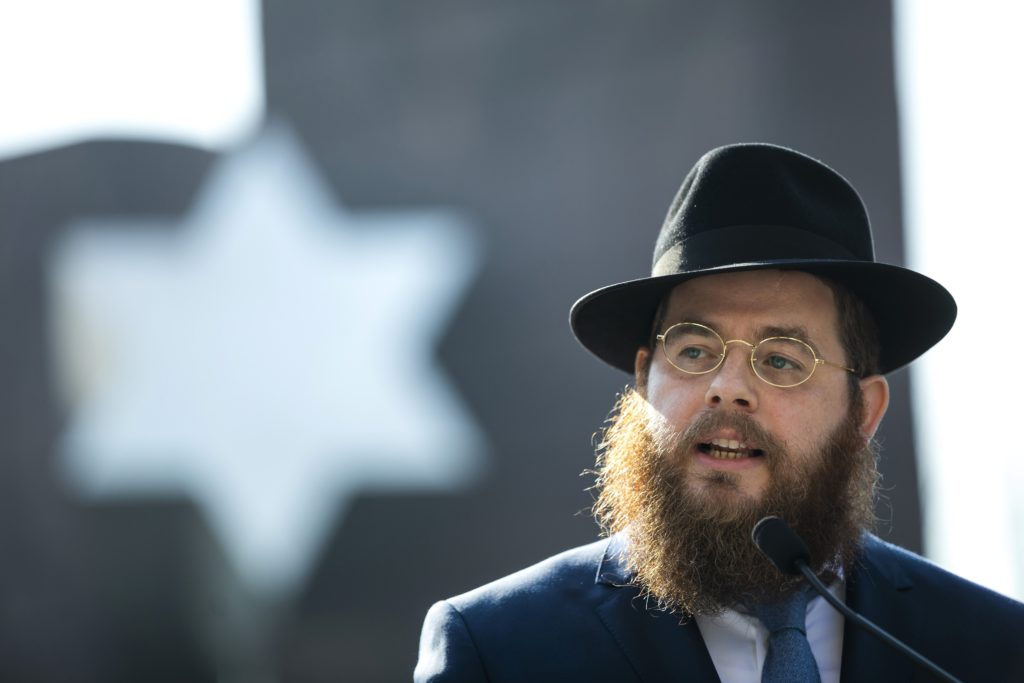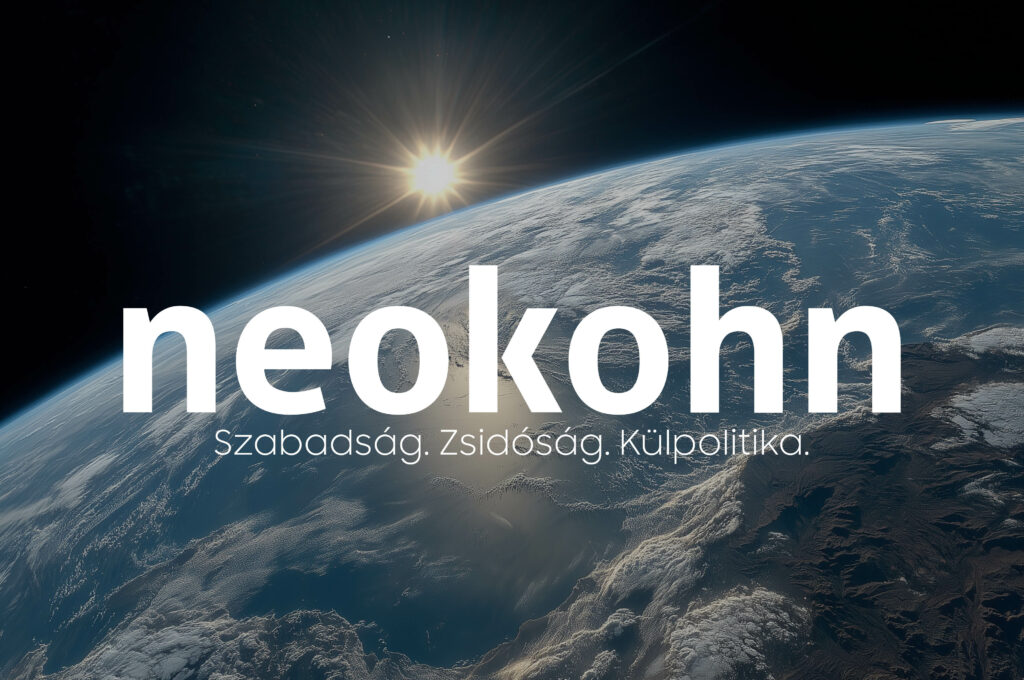Rabbi Shlomo Köves has given a lengthy radio interview on Hungarian radio station Klubradio about the currently forming new concept of the House of Fates and about the relationship between the various Jewish organizations.
The main message of the House of Fates has to be the underlying responsibility of human decisions, may it be big or small, for there is immense weight that each human decision carries. I believe this message has much relevance even to today’s society – explained rabbi Köves in an interview last Thursday in the morning show of the talk and opinion radio, Klubradio.
The leader of the Unified Hungarian Jewish Congregations, EMIH in short, highlighted, that the aim of the museum is that every visitor should feel some sort of personal relevance. The first concept was created in 2013 by historian Maria Schmidt but due to much controversy and turmoil, now it is being replaced by a new concept developed by an international team of experts of this very sensitive field.
After taking over the project, the first step was to put together a team of respected professionals, among whom there are museologists, Holocaust experts, all with previous experience in creating Holocaust museums and memorials around the globe.
The team is led by professor Yitzchak Mais, formerely of Yad Vashem, where he served as chief historian for over twenty years and by professor David Marwell, former director of the Holocaust Museum of New York. Also key member of the team is Israeli historian Esther Farbstein who just recently published a two volume book about the history of the Hungarian Holocaust.

Very soon a group of Hungarian historians and other professionals will be assembled as next step in the project. The new concept was approved recently by the Hungarian Government and will soon be presented to the International Holocaust Remembrance Alliance (IRHA) and to various distinguished civil organizations. Along with this, there is a team of 10 Hungarian historians, who work on gathering supporting materials and items for the various exhibitions.
„We work with people who not only are experts in the field of the history of the Holocaust, but who are also experts in creating the right environment for being able to credibly tell the story to various age groups as well”
– explained Rabbi Köves, who believes that it will take at least a year or a year-and-a-half, once the concept is created, to start working on the actual exhibition material.
The main target audience of the museum is high school aged children.
When designing the new concept, a thorough research has been conducted among high school aged children about their cognitive and emotional knowledge and relationship the biggest tragedy of the 20th century. This research was conducted by educational expert Szabolcs Szunyogh, who has broad experience in the field.
There will also be various focus group researches conducted in the coming months to be able to set the base themes so that it will be relevant to every visitor regardless of their age group and background. Also it is important to be able to convey the core messages to everyone, whether their visitation is for a short fifty minutes or a longer three hours.

Rabbi Köves also emphasized that, when presenting the horrors of this genocide, it is extremely important to convey the message of human responsibility and the fact that
the destruction of Hungarian Jewry is not only a loss the Jewish nation as a whole, but also a great loss and a national tragedy of Hungary, as a country.
He explained that the Holocaust will be put in a historical context, starting from the year 1867, with the start of the emancipation, followed the “golden era” of Hungarian Jewry and the rise of antisemitism in the beginning of the 20th century.
The exhibition will present the broader European landscape of Jewish life and the wake of antisemitism on the continent as well as the “uniquely” Hungarian “phenomena” of the Holocaust, such as the forced labor batallions and the Hungarian children’s barracks in Auschwitz, all presented along with personal memoirs of survivors of the tragedy.
When answering the question of the role and the influence of the Hungarian Government, Rabbi Köves stated, that although the Hungarian Government has given over the museum to the Jewish community, it is and will take active part in financing the creation of the House of Fates museum.
Köves believes, that international examples support the notion, that the best possible arrangement, even from the viewpoint of the majority population, is when the Jewish community gets to tell its own story. This ensures the credible and historically accurate presentation of this horrific event.
„I firmly believe, that a museum cannot be an exclusive museum of only one of the Jewish communities”
– stated Köves, while he also highlighted that EMIH has initiated talks with Mazsihisz, the largest Jewish community organization regarding the project for he believes that it is the highest responsibility of any leader of any Jewish organization to rise above disagreements and differing world views when it comes to projects as important as the House of Fates.





